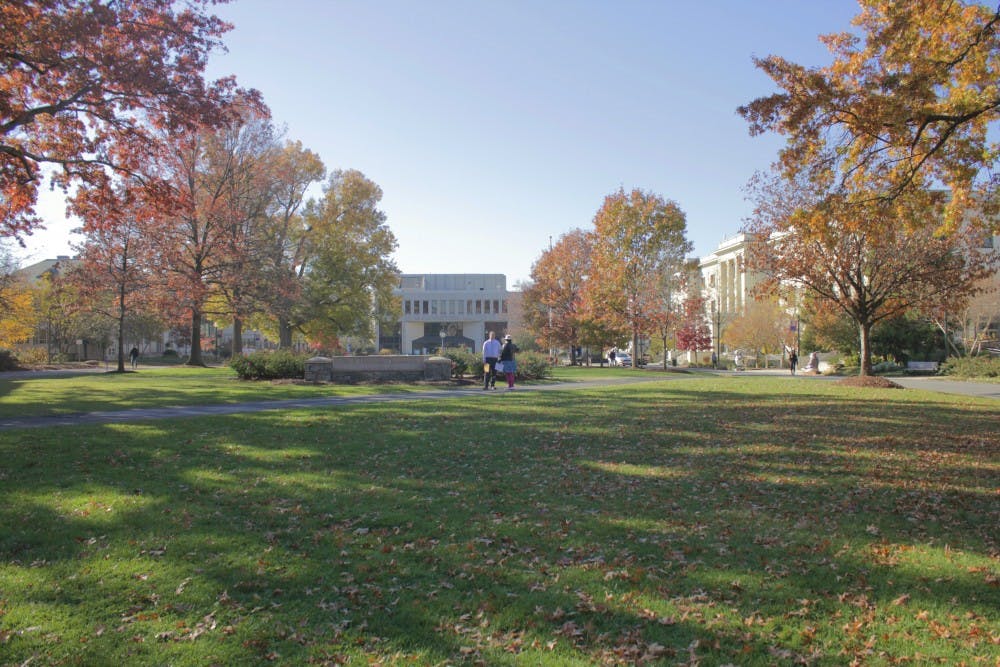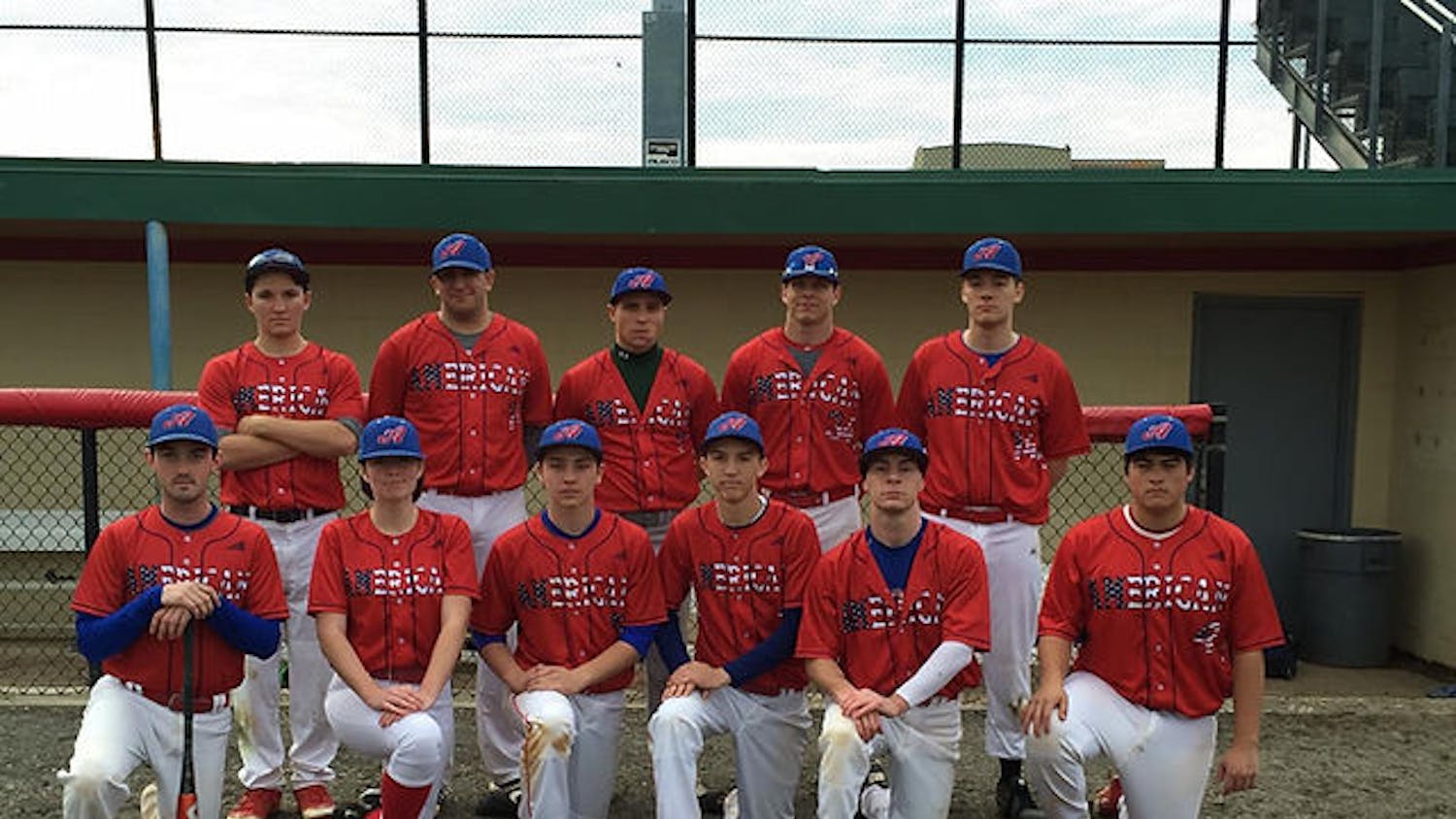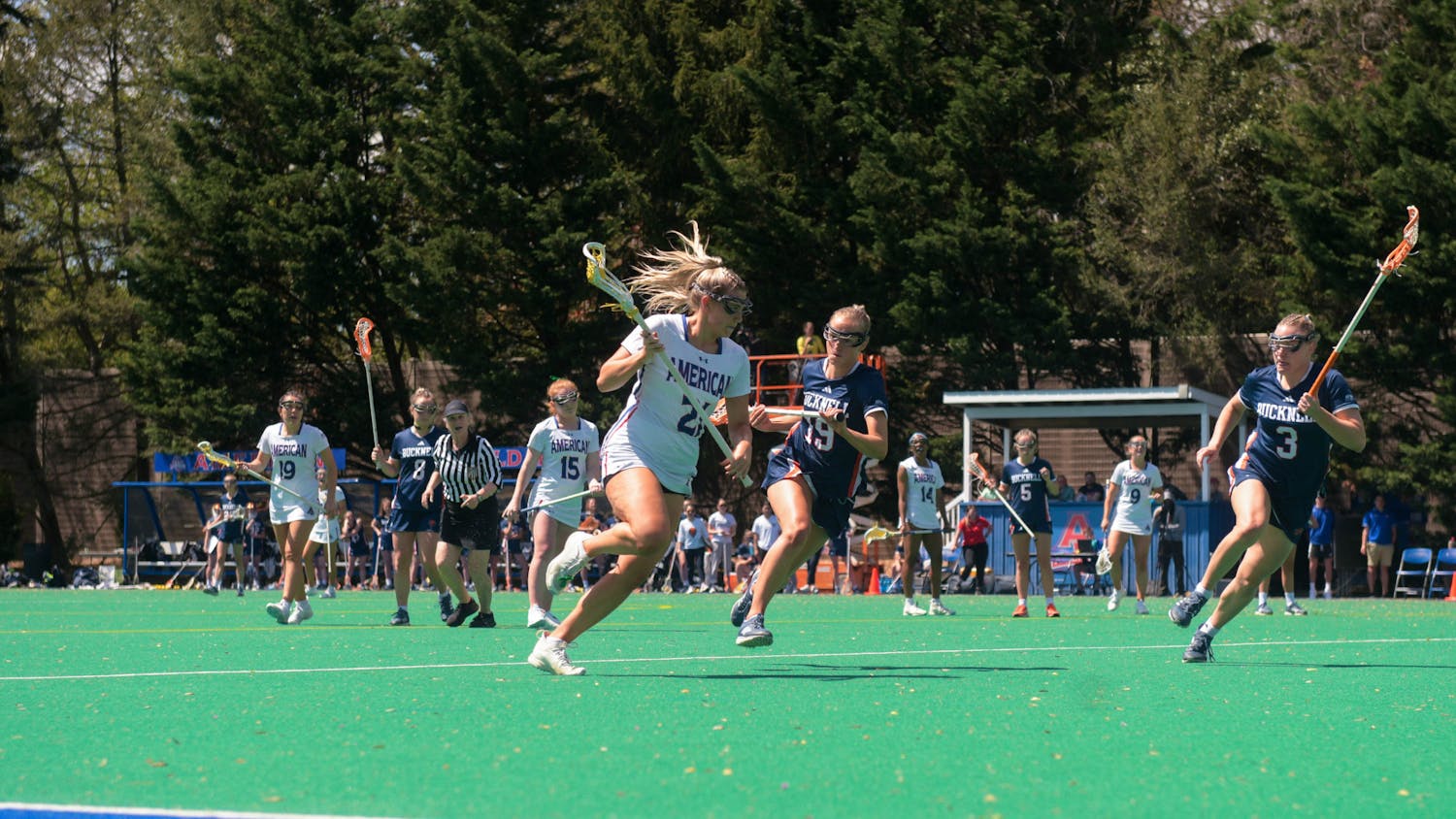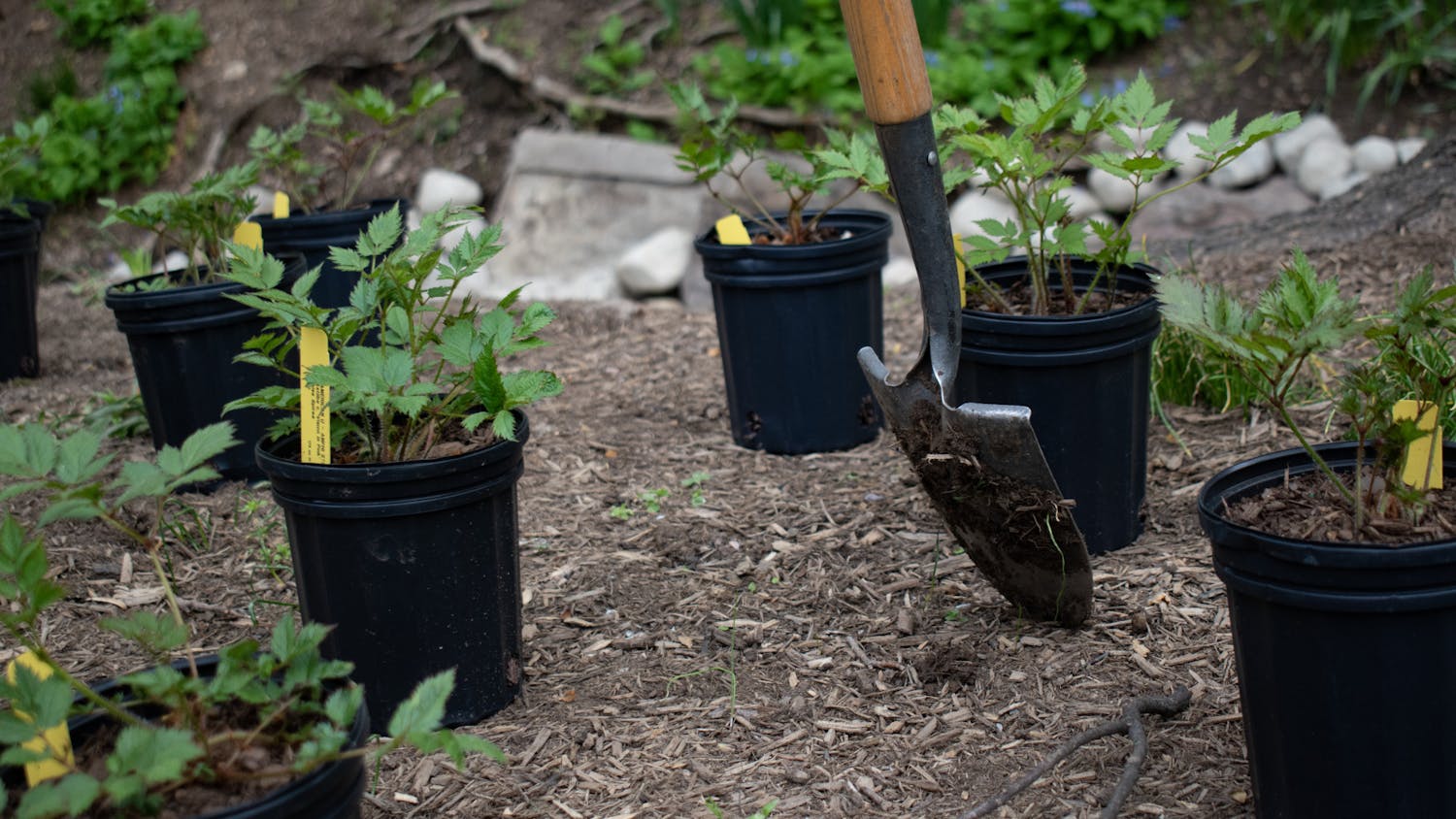This article originally appeared in The Eagle’s December 9 special edition.
Many campus organizations are looking to create more inclusive spaces after a semester of divisiveness on campus.
This semester has seen a number of tense moments, including racially charged incidents in Anderson Hall in September in which two black female students had bananas thrown at them, transgender discrimination with the arrival of the Westboro Baptist Church on campus on Nov. 11 and political discrimination when students protested president-elect Donald Trump on Nov. 9. Amid these situations and as a way to create a positive response to some of the tension, various student organizations at AU have taken multiple actions to become more inclusive this semester.
RHA addresses racism through discussion series
The Resident Hall Association (RHA), in collaboration with the Center for Diversity and Inclusion, recently implemented the “Creating Inclusive Communities” series, in addition to appointing a Director of Diversity and Inclusion. The sessions aimed to foster discussions on diversity and inclusion on campus, RHA President Sam Rogers said.
Rogers said that after the incidents in Anderson Hall, which many students have characterized as attacks, he felt it was RHA’s responsibility to respond and make sure that students felt safe within their living arrangements. This prompted the organization to hold the workshop series, which took place on Oct. 17 and Oct. 24.
“I think there’s definitely a problem with racism and other forms of bigotry on campus right now that really affect how residents feel and how they live their lives,” Rogers said. “They feel unsafe, they feel like they’re not part of the community, and as the Residence Hall Association, I think it’s our job to try and fix that if possible.”
Within the sessions themselves, which took place on Oct. 17 and Oct. 24, Rogers said that CDI peer mentors facilitated conversations with students about diversity and inclusion in residence halls, in addition to having participants reflect on their own identities and how those factor into their daily lives.
Sarah Everett, the director of wellness, inclusion and diversity for RHA, said that after attending the sessions, RHA members thought they had provided an opportunity for substantial conversations about identity to take place among participants.
“I chose that specific avenue for conversation because I had previously facilitated that CDI workshop and I knew it had some great reflective pieces about individual and community identity,” Everett said in an email. “I really appreciated the hard work of our four facilitators and those who came certainly left with some key points on things that they can do to create more cohesive—and inclusive—spaces in the residence halls.”
Despite the intent of the workshops to develop strategies to promote inclusivity on campus, Rogers said the two sessions were less successful than the RHA had originally hoped, with total attendance amounting to approximately 20 people overall.
“I really think that the people who come to these things willingly always have some sort of background knowledge and strive to be better allies,” Everett said. “Unfortunately, people who make things unsafe and uncomfortable for others often come from a place of ignorance and we can’t correct those behaviors if people don’t show up to learn.”
Looking into the future, Rogers said RHA is reevaluating the sessions to encourage greater student turnout, in addition to creating partnerships with AU’s NAACP chapter and the Black Student Alliance.
“We don’t have anything concrete planned right now, and I think part of it is because this hasn’t really been the RHA’s role in the past,” Rogers said. “RHA in the past has been a programming body where we occasionally put on some kind of social gathering or a pizza party, and that sort of thing.”
Student Government tackles change through multiple working groups
Since the creation of the Diversity and Inclusion Working Group within Student Government last year, efforts to promote greater diversity and inclusion in the organization have further increased under junior Lauren Lumpkin, the director of Diversity and Inclusion for SG.
Throughout the past semester, Lumpkin said she has focused more on diversity and inclusion internally within SG and in its work that affects the larger campus community.
“Within our work, I think we’ve been having a lot more conversations about diversity on campus and I think that the attacks in Anderson Hall have kind of made people who usually don’t think about diversity start thinking about it,” Lumpkin said. “I remember last year it was kind of hard to have these conversations with people unless they were already really into it, or already part of a marginalized group so they kind of felt like they had a stake in diversity and inclusion.”
Lumpkin said last year’s working group focused mainly on creating a report on Diversity and Inclusion to submit to President Kerwin for consideration, including recommendations such as appointing more faculty of color, increasing channels for complaint regarding discriminatory instances, and more. This year, the working group has expanded to include three different subgroups for different marginalized communities on campus.
“Last year was really just concentrated on students of color, but this year we have a students of color committee, an LGBTQ committee and a disability services committee,” Lumpkin said.
Lumpkin said that these three working groups are currently focused on four main projects. These include creating a multicultural space somewhere on campus for students of color to share and come together, potentially creating a report to the AU community to share what each of these multicultural groups are working on, working on increasing faculty members of color on campus and incorporating language on bias-related incidents into the student conduct code.
In addition to these larger projects, each working group has been identifying areas of improvement related to its focus. Examples of these areas include the disability committee’s focus on making campus more wheelchair accessible through Access AU and the LGBTQ committee’s commitment to addressing sexual violence within the LGBTQ community.
Lumpkin said Student Government’s communication with administrators and faculty has been very successful and receptive thus far, given the pressure the administration is facing from a variety of different demographics to make the University a more inclusive community for all.
“I think because of everything that’s been happening on campus between what happened in Anderson, all the protests, the election, there’s just so much happening that the administration and a lot of faculty and staff are really feeling like ‘Ok, it’s not enough for us to just talk about diversity and inclusion anymore,’” Lumpkin said. “Parents are putting pressure on us. Alumni and students are putting pressure on us. So I think that the administration’s really realizing that this is something that AU needs to be committed to. Otherwise, the future of the University is not going to be good.”
Student Media Board pushes for open conversation and safe-space training for staff
Members of the Student Media Board, which consists of nine organizations, including The Eagle, have been actively trying to find ways to promote diversity and inclusion within all of its media outlets, said Abi Weaver, a general-manager of American University Television and a senior in the School of Communication. Many of its leaders have participated in Safe Space training sessions to provide support to LGBTQ individuals and are encouraging open staff conversations about racial tension on campus, Weaver said.
Samantha Dumas, co-editor of the American Literary Magazine and a junior in the College of Arts and Sciences, said that there has been more diversity within the AmLit staff this semester than during any other point in the time that she has been at AU. She added that there has also been a push for more diverse content to be published, such as the inclusion of more spoken-word pieces and submissions relating to politics in the magazine. Dumas said that the content in their fall issue is representative of many different student views and identities on campus.
“We are on the path to more diversity and inclusion and are definitely doing everything we can, and I have already been talking to people who want to apply to lead the magazine next year about how they can continue our efforts,” Dumas said.
Student media can play a crucial role in empowering minorities and bettering the racial climate on campus, and it is essential they provide an outlet for all groups on campus to be heard, she said.
“It’s important for student media to support other student organizations, especially organizations that are based around ethnicity and nationality,” Dumas said.
Weaver said that after the events in Anderson Hall, she has tried to open up space for a conversation on race relations during staff meetings.
“We have been very clear about the fact that if someone is making ATV threatening or non-inclusive, anyone is allowed to ask them to leave because that’s not welcome here,” Weaver said.
Weaver worked with the Center for Diversity and Inclusion to organize a Safe Space training workshop in October and mandated that all members of ATV’s e-board attend, she said. She also opened up the training to members of other Student Media groups.
Weaver also attended a recent structural racism workshop organized by the student movement The Darkening and said there is a possibility of a separate workshop specifically for Student Media staff in the coming months.
Moving forward, Weaver hopes that there is greater diversity both within her staff and the content produced so that no voices feel silenced on campus.
“My role as a student leader on campus is to make sure that I am doing everything within my power to make this campus and the world a little more inclusive and safe, protecting the people who are most threatened and most in danger and giving voice to those who don’t have one,” Weaver said.





